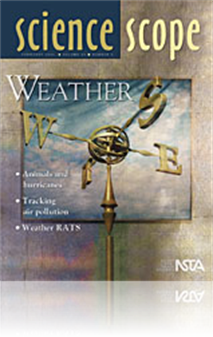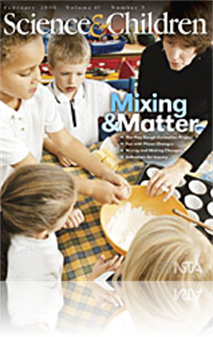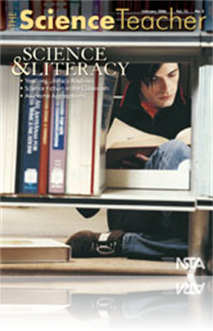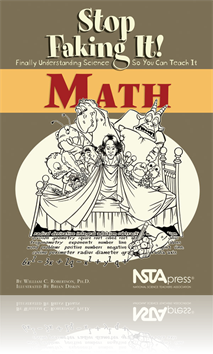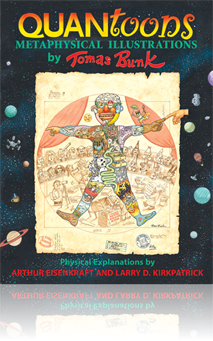All Resources
Journal Article
Science Sampler: Handmade weather instruments
For students to truly understand the science behind weather phenomena, they should be familiar with such physical concepts as the movement of molecules in solids, liquids, and gases; the relationship between temperature and pressure; and the transfer...
Journal Article
Teaching Through Trade Books: Exploring Your Environment
February is one of those months that is at the halfway point between the cold of the winter and the promise of the spring. It also offers a great time for students to begin to make initial observations about an area and then follow this area through...
Journal Article
Science Sampler: The Hot Zone: An interdisciplinary project on viruses
This integrated language arts and science project is based on selected parts of The Hot Zone by Richard Preston. Students read the parts of the book that concentrate on the scientific process of working with hot agent viruses, as well as the decision...
Journal Article
The Early Years: Nurturing Young Chemists
Chemistry explorations in early childhood classrooms often involve baking, mixing, or dissolving, during which students predict outcomes and try to replicate the results. The objective is to help students come to an understanding that even though we...
Journal Article
Editor's Corner - Science Literacy: Then and Now
The history of science is also a history of science writing. For scientists and also for our science students, the ability to communicate through writing and reading is a crucial skill at the heart of developing scientific literacy. In this month's ...
Book Chapter
This first chapter starts off with addition, subtraction, multiplication, division, fractions, and a few other things. It gives a demonstration of the basic differences between memorizing rules and really understanding the process. For those who te...
Book Chapter
Given that the vast majority of people reading this book will never ever have to teach calculus, you might be wondering why in the world the topic is being addressed here. Well, even though you might not teach calculus, chances are that when teachin...
Book Chapter
This chapter deals with fractions and decimals. This is one place where people who are otherwise fine with math jump off the boat and decide it's just too weird to continue. As with everything else, though, it's only a matter of understanding what'...
Book Chapter
This chapter contains basic material related to exponents that is a supplement to Chapters 1 and 2. Keeping with the theme of the first two chapters, there will be a discussion of procedures for which one may know the rules, but might not understand...
Book Chapter
This chapter is all about negative numbers, and how to deal with them. They're not all that difficult to understand, but for some reason people get just a little uptight when they see computations involving negative numbers. I'm guessing that the a...
Book Chapter
Why Do They Have to Gum Everything Up With Those Letters?
Often people who are relatively comfortable doing math with numbers completely freak out when variables (you know, those letters that take the place of numbers) come into the picture. Things start looking much more abstract and complicated. You don...
Book Chapter
All Things Being Equal...Or Not
Now that we've covered at least a few examples of how we get equations from the physical world, it's time to work on solving those equations. Solving an equation means figuring out what values of the unknowns (the variables) will make the equality a...
Book Chapter
Book Chapter
Pie are not Round; <i>π</i>²
What would a math book be without a nerdy math joke? Bad joke aside, you might recognize π² as the formula for the area of a circle. And you might infer from that fact that this chapter addresses geometry. Often people think of geometry as a b...
Book Chapter
Although faster-than-light travel is commonplace in science fiction, ordinary matter in the ordinary world must obey the laws of physics. The speed of light is the speed limit in the Universe. Only massless particles such as photons can travel at t...



